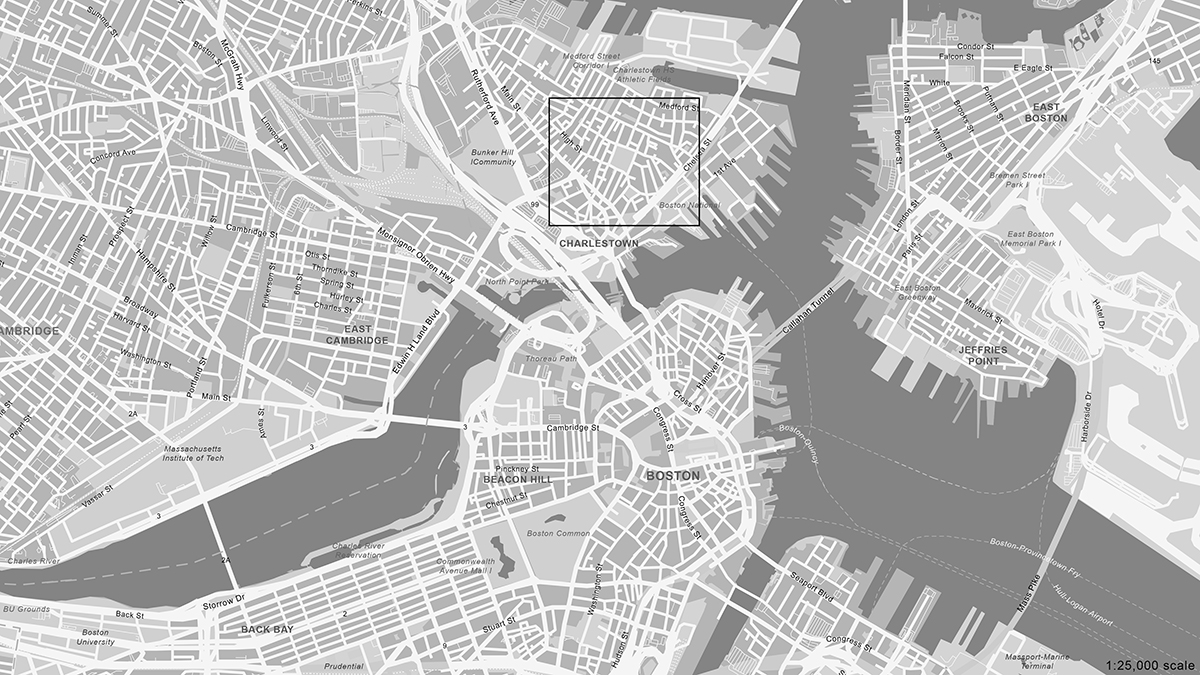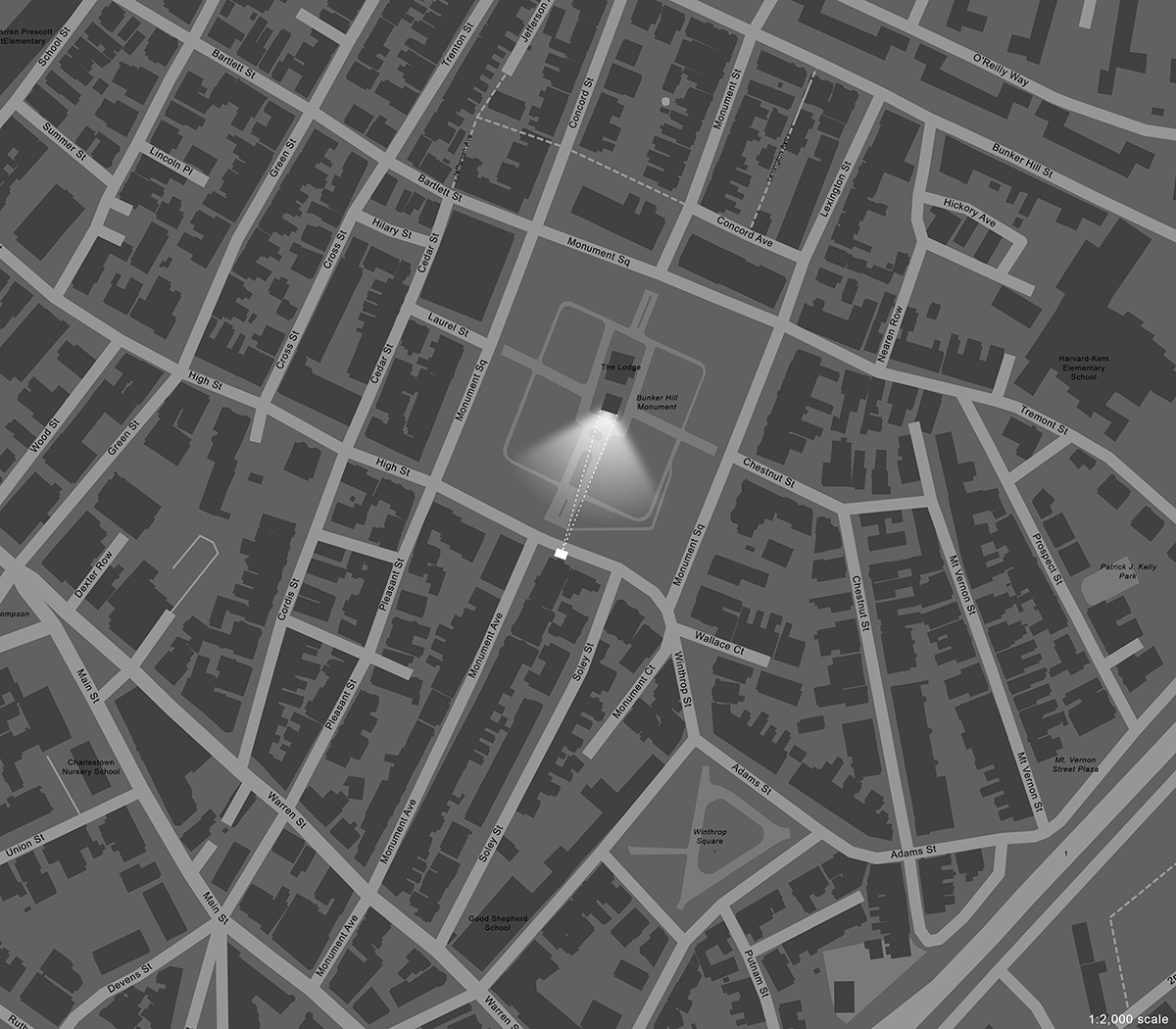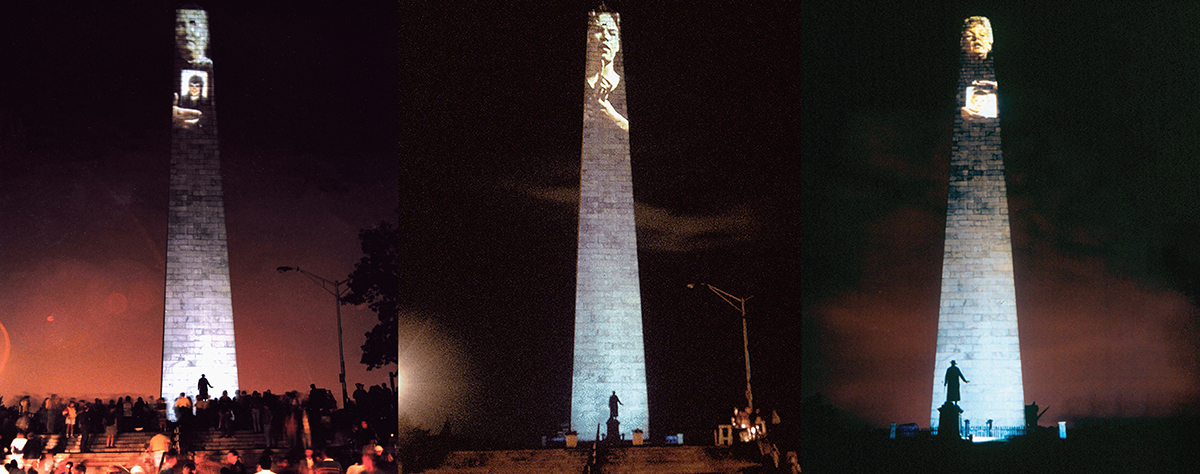Interrogative Design: Selected Works of Krzysztof Wodiczko – Bunker Hill Monument Projection
For the duration of the Interrogative Design exhibition, we will be providing expanded online content to give viewers a deeper access to selected projects. Materials for this exhibit provided by the artist, with unique edits specially produced for this project by GSD Exhibitions.
Bunker Hill Monument Projection, 1998, Charlestown, Massachusetts
• Monument Square, Charlestown, Massachusetts 02129
• Run Dates: September 24–26, 1998
The Bunker Hill Monument is Boston’s most famous public monument, commemorating the fight for freedom during the American Revolution. The construction of the granite obelisk, in Egyptian style, began on the 50th anniversary of the Battle of Bunker Hill, fought between American colonists and British troops in 1775. Completed after seventeen years, the 221-foot structure stands on Breed’s Hill, the highest hill of Charlestown, a traditionally working-class district of Boston with a particularly high rate of murder and violence, especially among young people. Aimed at giving a voice to the aggrieved, the projection was co-organized by the Charlestown After Murder Program, a support group for victims of violence founded by local mothers who had lost their children to violence. The 19-minute looped projection featured the testimonies of three mothers and two brothers of murdered persons. The projection was organized as part of the project Let Freedom Ring by the Institute of Contemporary Art (ICA/Vita Brevis) in Boston and curated by Carole Anne Meehan.
Wodiczko began his community engagement process by acknowledging his presence as a “stranger,” and cultivated the trust of key members of this community through a deep listening process. Community-based vigils in honor of people lost in this neighborhood through murders had been held, but there existed a code of silence and, hence, a lack of justice. The artist’s proposition that the stories of the aggrieved be projected onto their local and national landmark inspired participation, and the artist and the community’s stories transformed a historical monument devoted to freedom fighters into a monument of contemporary heroes trying to fight violence. On top of the huge obelisk were projected images of the faces of people recounting their experiences, mothers of murdered children, or young people who had lost their brothers or sisters. Shown from the waist up, they held candles or portraits of their dead loved ones, the huge images of their faces enlivening the monument, and their painful confessions and testimonies breaking the borough’s conspiracy of silence. This is the first instance in Wodiczko’s public projections where participants showed their faces and spoke directly to their community.


